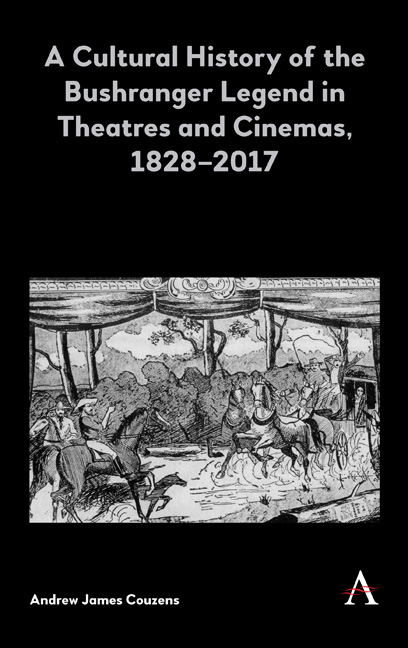Introduction: Defining the Bushranger Legend
Published online by Cambridge University Press: 14 February 2019
Summary
‘Bail up!’ On the roads of rural Victoria and New South Wales throughout the nineteenth century, but particularly during the gold rushes of the 1850s– 60s, these words signalled a peculiarly national encounter. Gold escorts, mail coaches, banks and homesteads were all targets of these outlaws, known in Australia as bushrangers. Even now their names – Ned Kelly, Captain Thunderbolt, Ben Hall, Dan Morgan – recall specific engagements with cultural traditions and ideologies that resonate with national concerns. Though their historical reign is now long past, their cultural reign continues unabated. Bushrangers remain a core component to the self- identification of many Australians, especially those able to trace their family history back to colonial Australia. Yet the cultural influence of bushrangers reaches beyond these family legacies and embeds itself within certain national traditions of self- definition. They have become greater than the sum of their parts, their role in Australian cultural memory far exceeding their direct influence on Australian history, resulting in the formation of a constantly evolving bushranger legend.
One of the most powerful avenues for this legend's cultural dissemination is the visual representation of bushrangers in popular entertainments. Throughout the twentieth century and into the twenty- first, the cinema has been the most significant site for this cultural phenomenon. However, before cinema technologies provided the opportunity for mass popular entertainment, colonial theatre conventions established ideological and representational traditions associated with bushrangers that Australian films would also exhibit due to various industrial continuities between the stage and screen in Australia. Furthermore, both mediums shared an interest in visual and performative elements and entertained comparable popular audiences. These mediums were forced to respond to other influences on the bushranger legend, including historical developments and literature. Theatre and cinema therefore participated in a feedback loop in which they simultaneously reflected on and participated in the formulation of the bushranger legend.
This study is concerned with the history of this feedback loop in cinema and colonial theatre. It not only questions how these texts participated in the construction of national character via their representation of the bushranger legend but also how they responded to other influences, whether textual or extratextual. It establishes a comprehensive picture of the multifaceted approaches to and versions of the legend that emerged at different times, identifying industrial, political, social and historical continuities between them.
- Type
- Chapter
- Information
- Publisher: Anthem PressPrint publication year: 2019



